6 Best Barbell Curl Alternatives (with Pictures!)
Despite the effectiveness of barbell curls at building muscle mass, replacing it with a similar alternative exercise may be the best plan of action for certain situations. Fortunately, there are many barbell curl substitutes to choose from.
But, before picking a suitable replacement for the barbell curl, we must first understand what makes an alternative suitable in the first place - and which ones are best for your specific needs.
Dumbbell curls, cable machine curls and EZ bar curls are just a few examples of barbell curl alternatives that share similar mechanics and muscular recruitment - but they are not all suitable for the same situations, and as such it is up to the lifter’s discretion to choose which is most appropriate for them.
What is the Barbell Curl?
The base characteristics of the barbell curl are that of a single-joint isolation exercise, usually performed as an adjunct accessory movement to heavy compound movements that target the biceps as well.
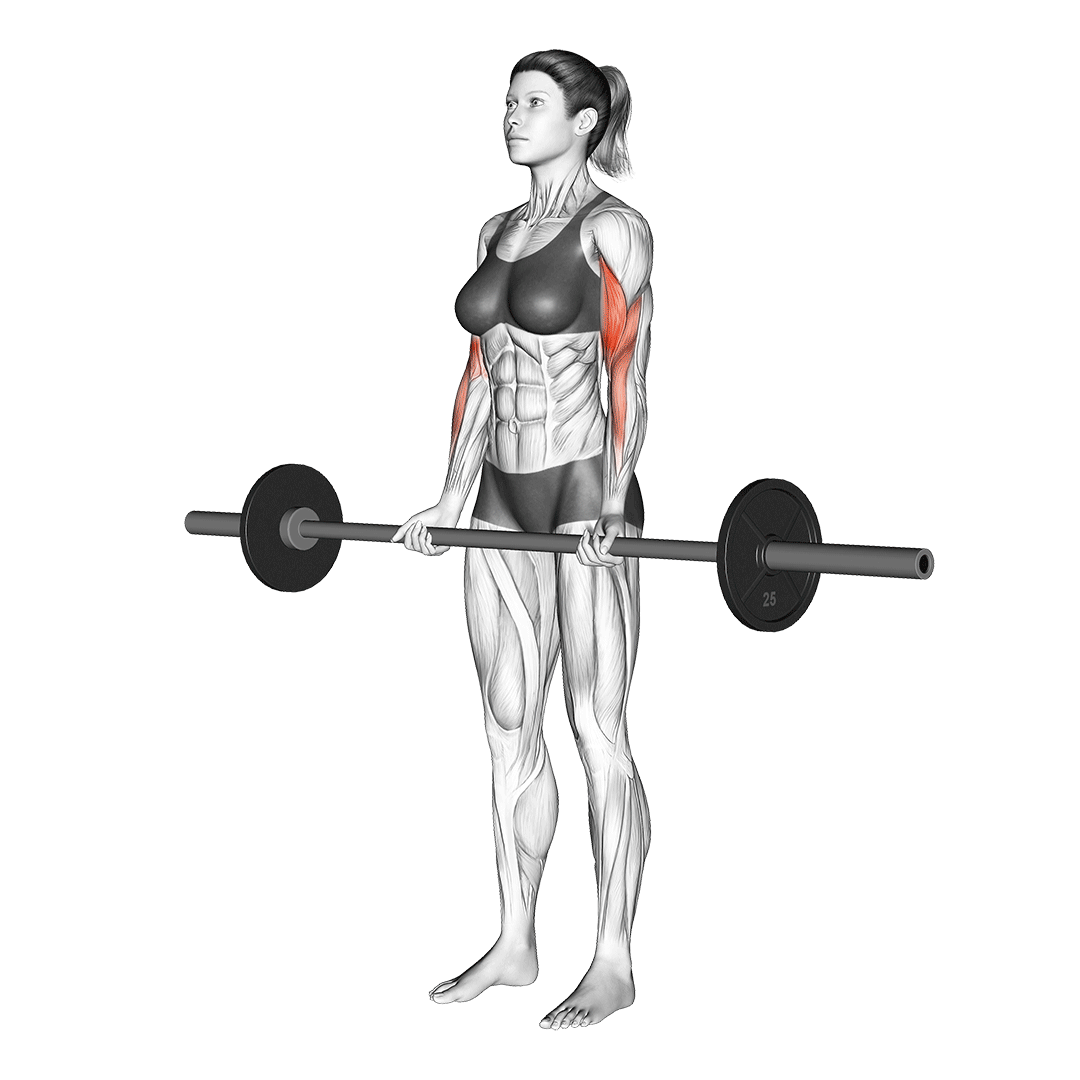
When using the term “barbell curl”, lifters will often be referring to a conventional bicep curl performed with a barbell and pair of weight plates, with other forms of barbell-based bicep curl exercises being seen as entirely distinct movements in comparison.
Muscles Worked by the Barbell Curl
Being an isolation exercise, the barbell curl solely trains the biceps brachii - though it may also recruit other nearby muscle groups in a static capacity, such as the brachialis and the various forearm muscles.
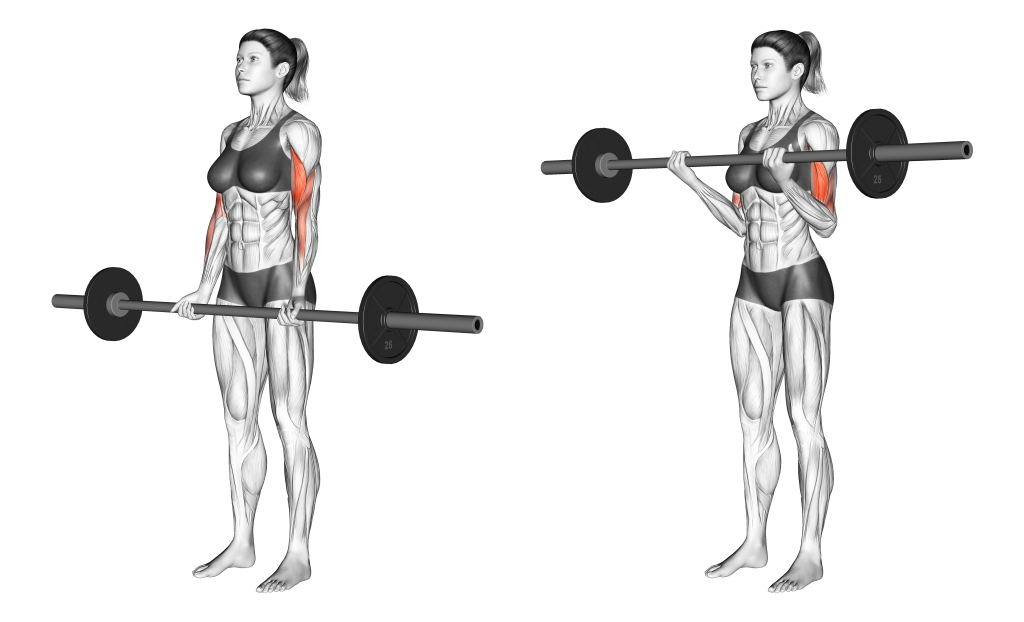
Why the Barbell Curl Should be Replaced
The barbell curl has stood the test of time as one of the most effective go-to biceps training tools, as it is both simple yet capable of inducing hypertrophy to an impressive degree.
While there is no doubt that the barbell curl is indeed a good exercise, this does not necessarily mean that it is always the appropriate choice when structuring a training program.
Certain training goals or physiological characteristics of an exerciser may necessitate that the barbell curl be replaced with an alternative instead.
If the lifter’s goals lie in improving their general arm thickness, remedying a bilateral muscular imbalance of the biceps or if they experience pain and discomfort when curling a straight barbell - then there are rest assured many possible exercise that can fill the role of the barbell curl without the same negative effects.
How to Pick the Right Alternative to Barbell Curls
Picking the right barbell curl substitute requires the lifter to identify two things; their goals, and what characteristics of the barbell curl that they require to reach said goals.
For lifters seeking simple and effective biceps training stimulation - nearly every sort of curl variation should be sufficient, so long as other caveats like equipment availability and history of injuries are not in the way.
Though not every exercise will train the biceps to the same degree as the barbell curl, with appropriate programming, it is not all that important.
The majority of your muscular growth should be stimulated by compound movements, with isolation exercises (like the barbell curl and its alternatives) acting more as a method of “finishing off” a muscle group instead.
This not only ensures a greater hypertrophic and neural-adaptive response, but also reduces the risk of injury from a single muscle group being overloaded on its own.
For Goals Other Than Simple Biceps Growth
More specific training goals such as greater targeting of the long head of the biceps, a larger range of motion or the inclusion of other elbow flexor muscles will all have specific exercises that are better for meeting the lifter’s needs.
In particular, movements like hammer curls can even shift the recruitment pattern to that of a compound one, just as how preacher curls or resistance band curls can greatly lengthen time under tension of the biceps.
Furthermore, lifters specifically avoiding the barbell curl because of discomfort or pain are rather common - especially if the pain is experienced on the inner side of the wrist or forearms. This is remedied by picking an alternative exercise that allows for better hand positioning and wrist neutrality, such as the EZ bar curl or dumbbell curls.
Alternatives to Barbell Curls
1. Dumbbell Curls
Dumbbell curls are a single-joint isolation exercise mechanically similar to the barbell curl - only performed with the arms working independently of each other. This causes less combined force to be produced and therefore less total weight lifted, though the intensity may remain the same.
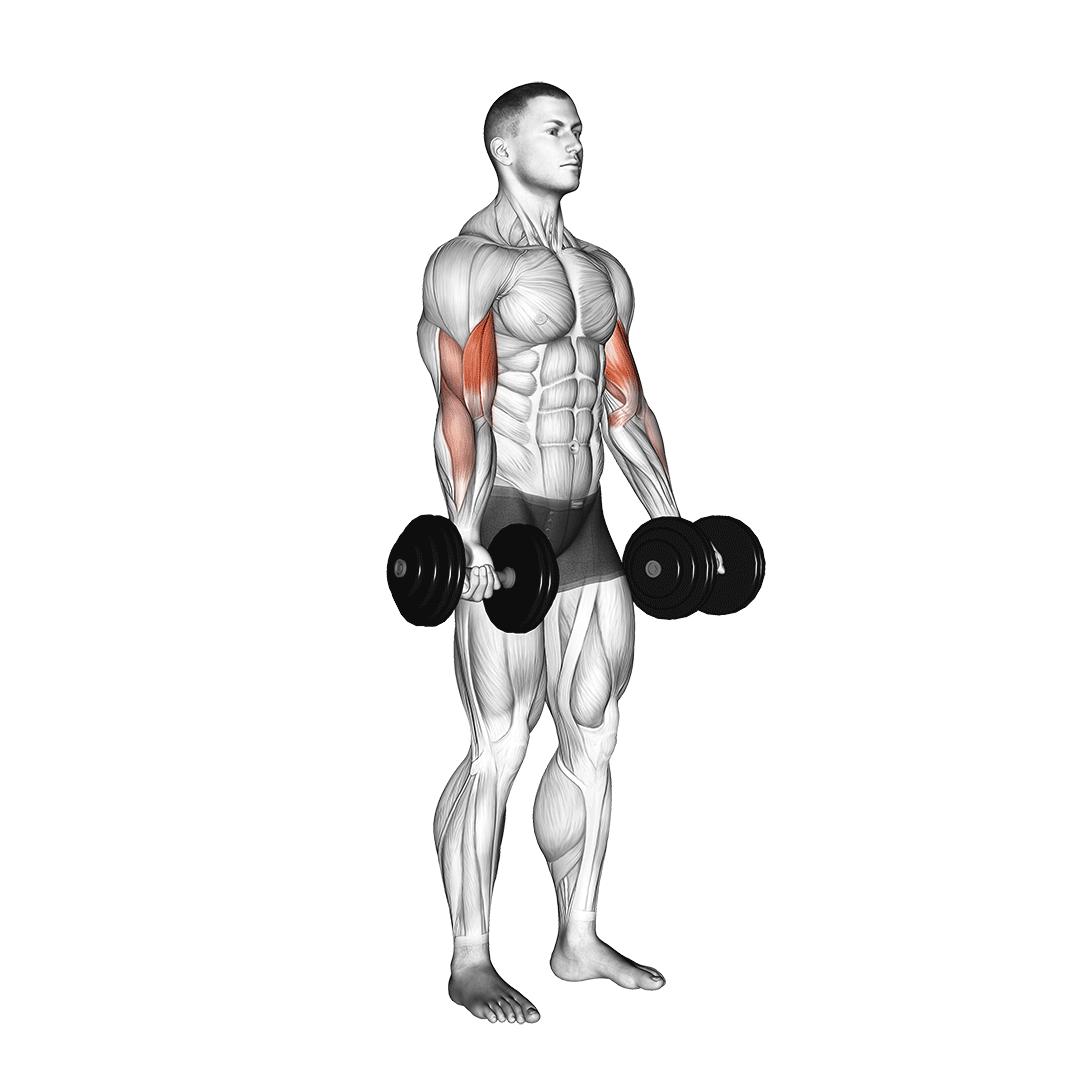
Muscles Worked by Dumbbell Curls
Both dumbbell curls and barbell curls will solely train the biceps brachii, though dumbbells may be somewhat better at isolating each individual biceps muscle due to the unilateral nature of the exercise.
Benefits as a Barbell Curl Alternative
Dumbbell curls are occasionally preferred over barbell curls due to the reduced risk of wrist or forearm injury that they present, as well as the fact that they are generally more accessible than barbell curls - both in terms of equipment as well as the actual complexity of the movement itself.
Equipment Needed to Dumbbell Curl
Dumbbell curls solely require a pair of dumbbells - if not a single dumbbell, if performing alternating dumbbell curls instead.
2. Machine Cable Curls
Whether it be out of a desire for a longer time under tension or simply a lack of access to free weights, performing a bicep curl with a cable machine is also a viable alternative to the standard barbell bicep curl.
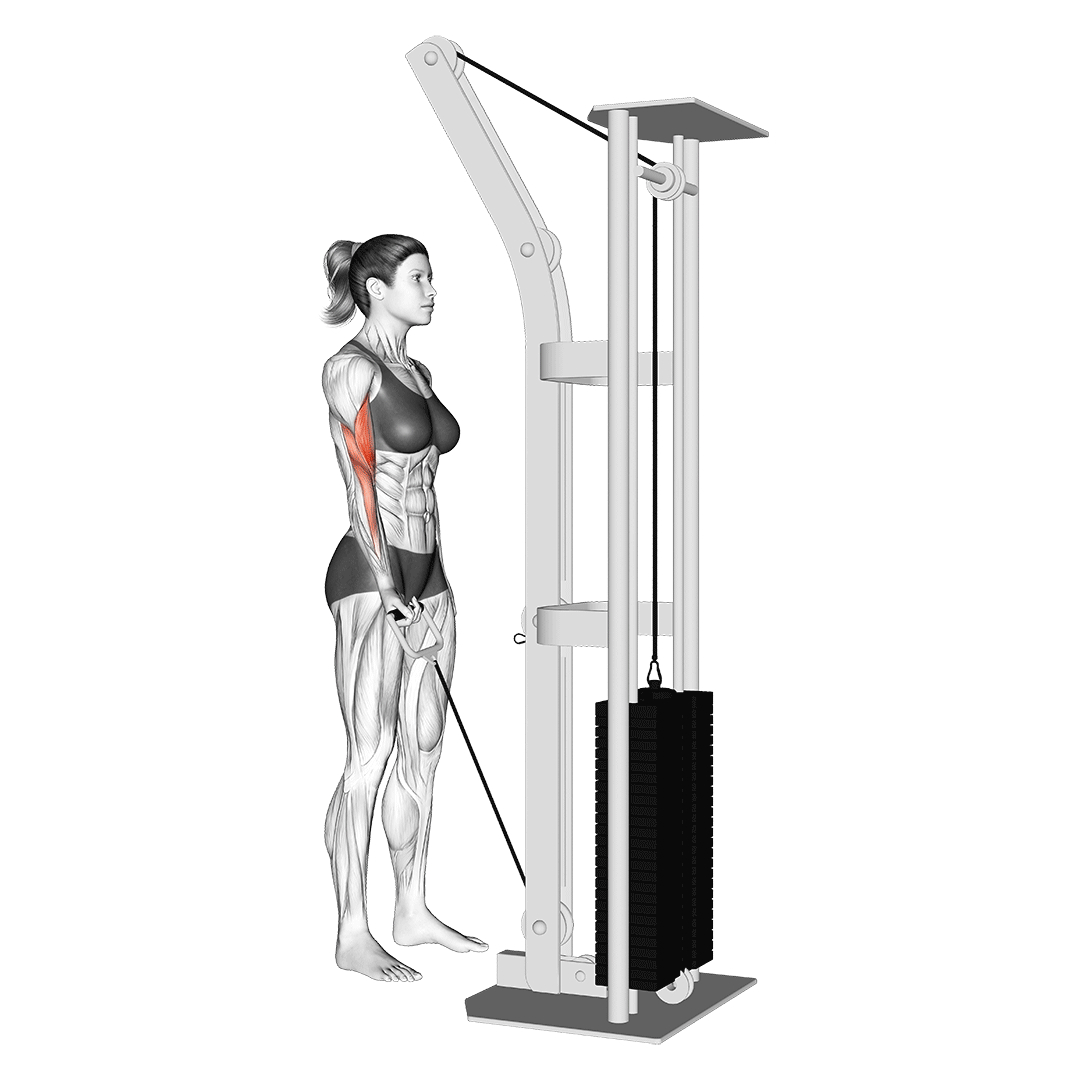
The machine cable bicep curl or simply “cable curl” is a single joint isolation exercise that provides a unique training stimulus and greater ease of use, though it does require a cable machine - making it less suitable for home gym owners.
Much of the same advantages and disadvantages of machine-based training applies to cable curls, with a comparatively reduced usage of stabilizer muscle groups (the brachialis and forearms), but a lengthier time under tension placed on the biceps.
Muscles Worked by Machine Cable Curls
Machine cable curls are an isolation exercise and train much the same muscle group as the barbell curl; the biceps brachii.
Unlike the conventional barbell curl, however, the machine cable curl utilizes the muscles of the brachialis, brachioradialis and other muscles located in the forearms to a lesser extent.
This is simply a consequence of the self-stabilizing resistance that is provided by resistance training machines.
Benefits as a Barbell Curl Alternative
Not only do cable curls provide a longer time under tension in comparison to barbell bicep curls, they are also far more comfortable to perform - often featuring adjustable angles of resistance, interchangeable handles of different materials and easily adjusted levels of resistance.
Furthermore, the majority of modern day resistance training machines come with their own set of built-in safety mechanisms, and as such it is far less likely that a lifter will experience discomfort or injury when performing a cable curl.
Equipment Needed by Barbell Curl Alternative
The machine cable curl will require a cable machine and a cable pulley attachment that allows for a pronated grip, such as a single-hand handle, a straight bar attachment or an EZ bar attachment.
3. EZ Bar Curls
EZ bar curls are the more wrist-friendly counterpart to the conventional barbell curl, often preferred by lifters with poor wrist mobility or those whose proportions are not quite compatible with the use of a straight barbell for bicep curls.
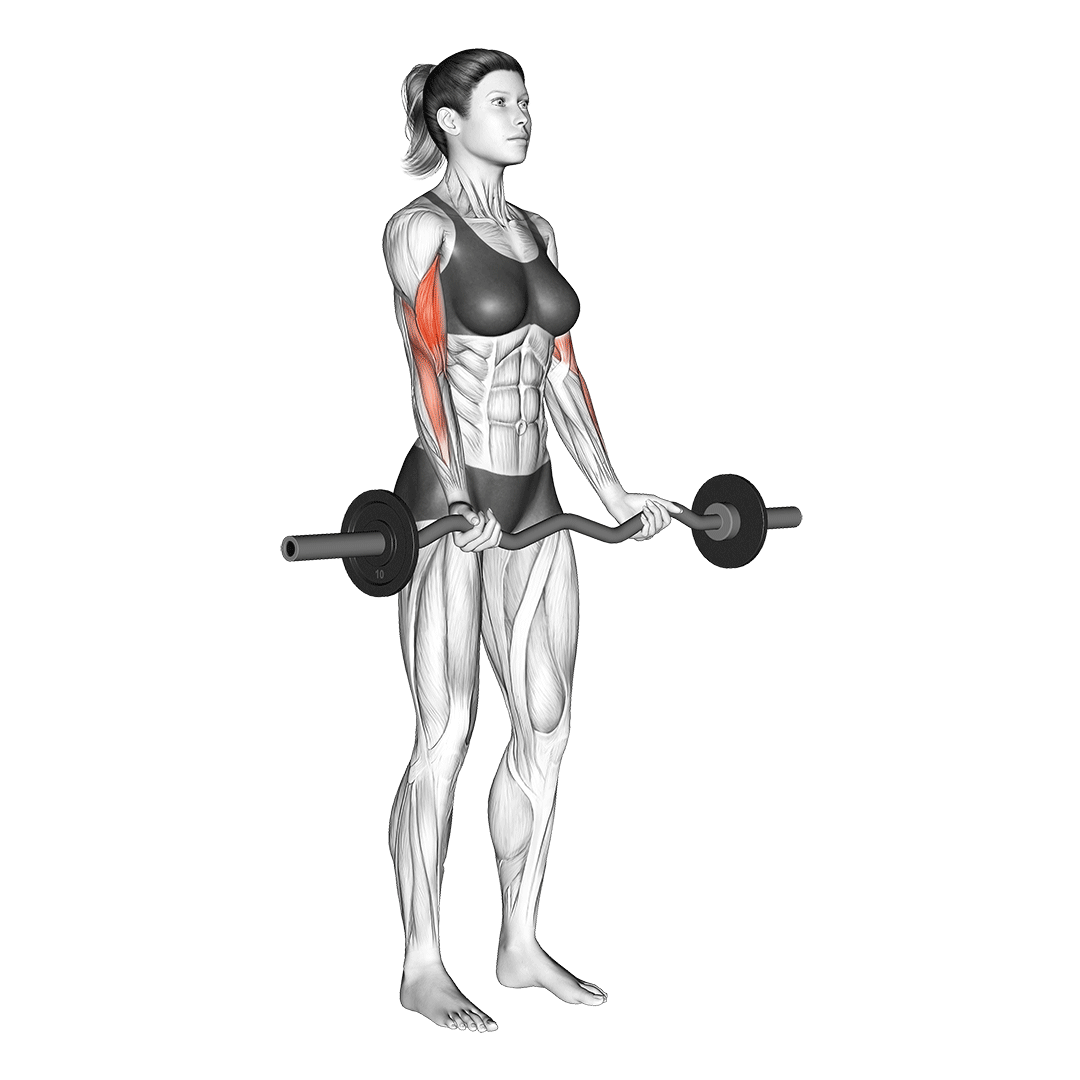
The EZ bar curl - like many other free weight barbell curls - is a single-joint isolation exercise most often performed as an accessory movement to heavy compound exercises that also target the biceps brachii.
Muscles Worked by EZ Bar Curls
The EZ bar curl shares the same muscular recruitment pattern as the conventional barbell curl, where the biceps brachii are the sole exercise utilized as a primary mover muscle, whereas other muscles like the brachialis and forearm muscles are used in a stabilizing capacity alone.
Benefits as a Barbell Curl Alternative
Though the EZ bar curl is mechanically and visually similar to the barbell curl, it is often considered superior due to the shape of the barbell used, which allows for a slightly greater range of motion and a more comfortable movement in general.
Equipment Needed to EZ Bar Curl
The EZ bar curl will obviously require an EZ barbell, as well as a set of weight plates. Barbell calipers may also be used so as to reduce the risk of accidents occuring.
4. Preacher Curls
Preacher curls are less an alternative to the barbell curl as they are a method of adding to the exercise.
To do so, the lifter will make use of a preacher bench so as to increase the range of motion, intensity and length of time under tension with which the exercise is performed - any sort of equipment used to perform a bicep curl variation may be used, including barbells, dumbbells, kettlebells or even a cable machine.

As such, the specific characteristics of a preacher curl will depend on what sort of equipment is being utilized - though they almost always share the same aspects of being a biceps isolation movement.
Muscles Worked by Preacher Curls
Preacher curls will primarily target the biceps brachii, but can also occasionally also recruit the brachialis as a stabilizing muscle group.
Benefits as a Barbell Curl Alternative
Preacher curls feature a wider range of motion, longer time under tension and significantly improved level of biceps brachii recruitment in comparison to most other bicep curl variations.
This creates a more effective and intense exercise overall, though it also means that less weight may be lifted in total.
Equipment Needed to Preacher Curl
Preacher curls will require a preacher bench, as well as equipment for performing bicep curls.
For bilateral contraction, a straight barbell or EZ barbell may be used, although dumbbells and kettlebells will also be perfectly suitable as well.
5. Resistance Band Curls
For lifters at home or those wishing to participate in active rehabilitation, bicep curls performed with the use of a resistance band is perfect.
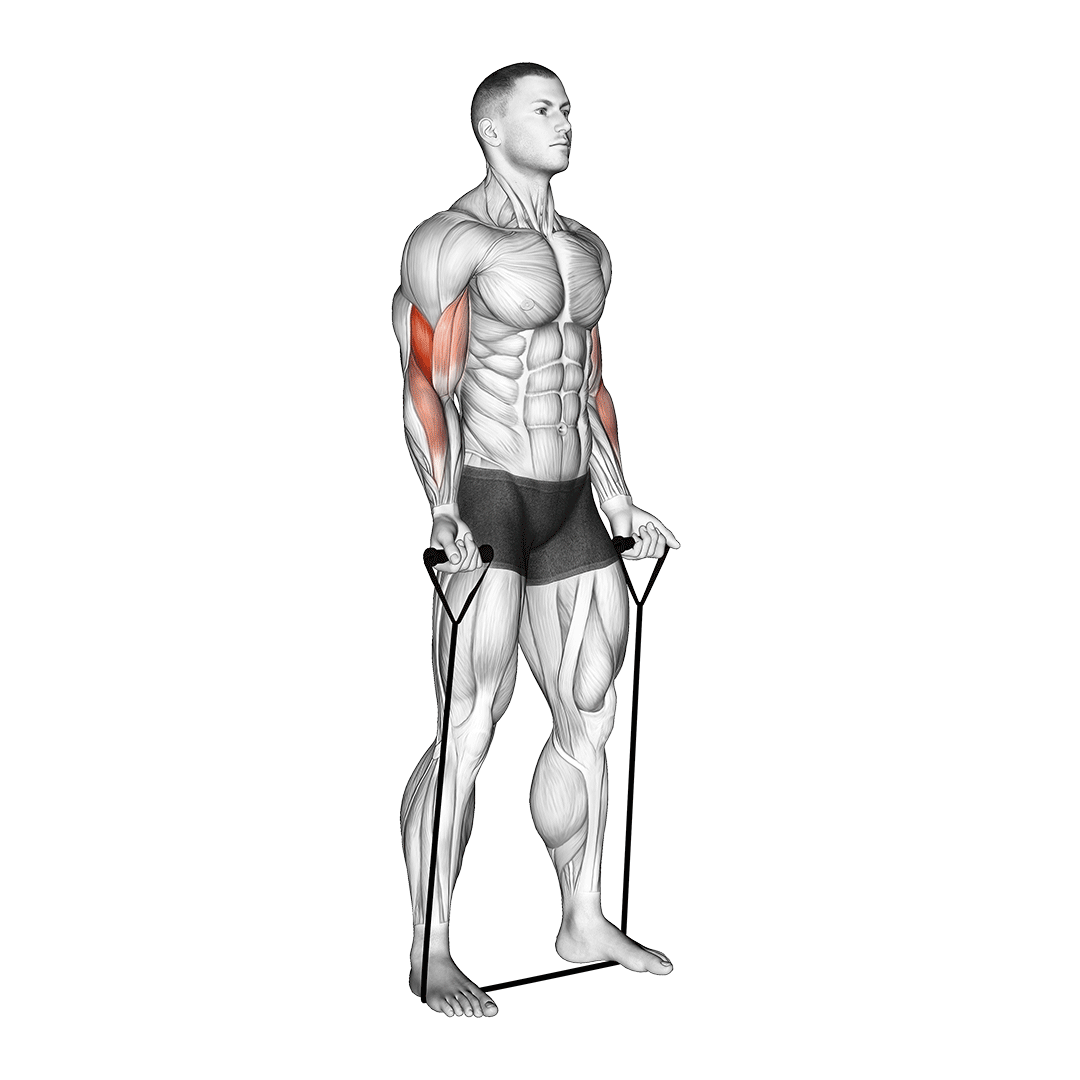
Like many other curl variations, resistance band curls are a single-joint isolation exercise - though they offer a somewhat different kind of training stimulus than what one would encounter with free weight equipment, featuring a lengthier time under tension and more comfortable movement in general.
Muscles Worked by Resistance Band Curls
Resistance band curls primarily work the biceps, but may also utilize the shoulders, forearms and brachialis in a stabilizing capacity, depending on the position of the other end of the band.
Benefits as a Barbell Curl Alternative
Apart from a longer time under tension, resistance band curls are also less likely to result in strain or injury of soft tissue, and can be adjusted so as to change the angle of resistance or position of the body as needed.
Furthermore, resistance bands are economical and easy to store or transport - making them ideal for physical rehabilitation clinics, lifters on vacation or home-based exercisers.
Equipment Needed to Resistance Band Curl
Resistance band curls will only require a low to moderate level resistance band, though some lifters may wish to also have a weight plate or similarly heavy object with which to anchor the band as well.
6. Hammer Curls - Parallel Bar and Dumbbell
Hammer curls in general are an alternative to the standard bicep curl - of which will trade out the isolated training stimulus for a wider-reaching compound one, including other muscles along the arms such as the brachioradialis.
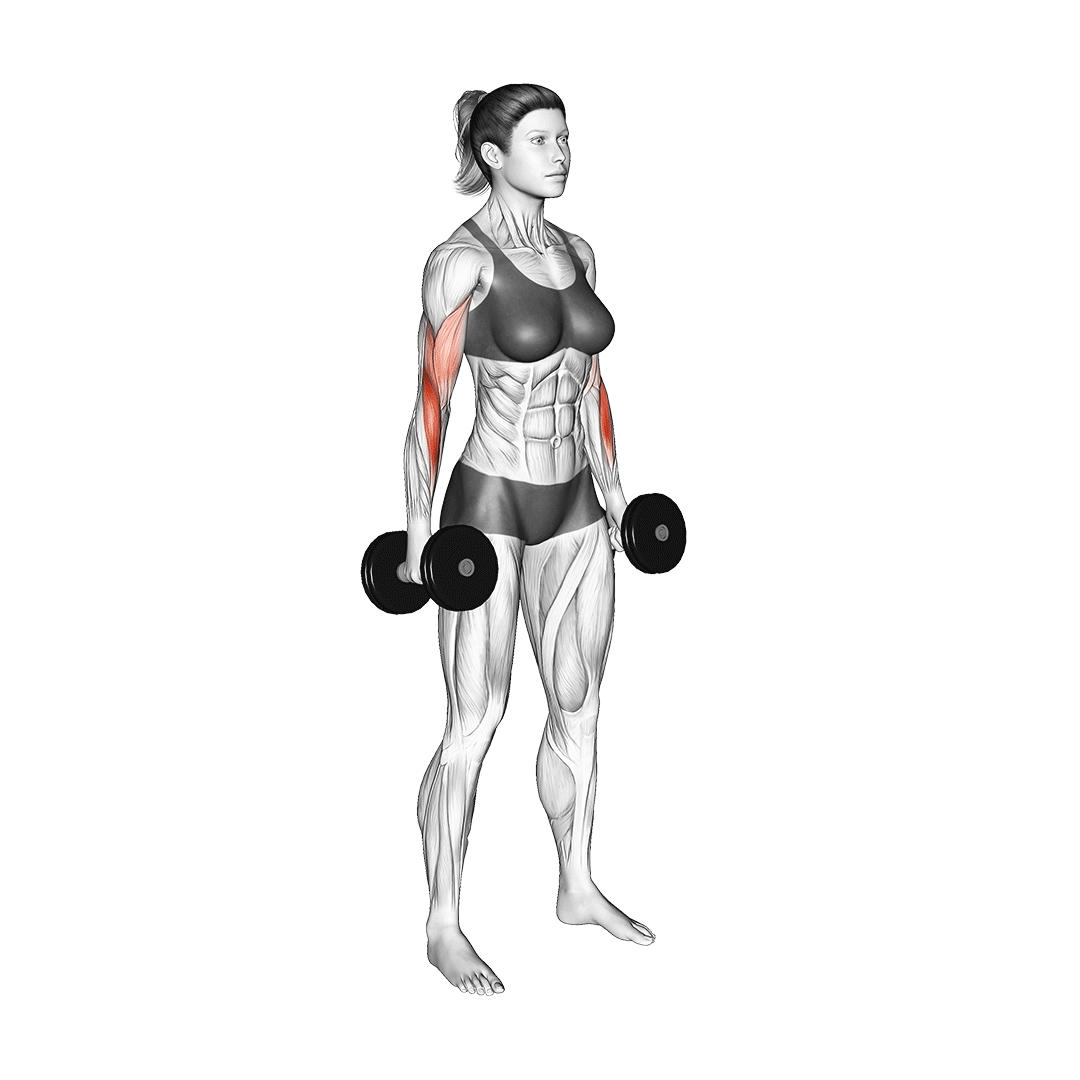
Whether performed with a parallel bar or a pair of dumbbells, hammer curls are nonetheless still single-joint compound movements utilized in much the same manner as barbell curls or any other form of bicep curl, only with the inclusion of more muscles.
Muscles Worked by Hammer Curls
Hammer curls will recruit the muscles of the biceps brachii alongside the brachialis and brachioradialis as primary mover muscles. This is distinct from other curl variations, of which will not utilize the brachialis or brachioradialis in a significant dynamic capacity.
Benefits as a Barbell Curl Alternative
Apart from training more than just the biceps, hammer curls keep the wrists in a neutral rotation, eliminating the source of pain that is a common complaint of barbell bicep curls.
Furthermore, hammer curls are excellent for reinforcing the elbow flexion biomechanic, reducing any further risk of elbow injury and producing significant carryover to other lifts that also utilize the elbows, such as conventional bicep curls.
Equipment Needed to Hammer Curl
Hammer curls may be performed with a parallel barbell, dumbbells, kettlebells or even a cable machine, provided that the correct attachment is available.
Frequently Asked Questions (FAQ)
What is a Bodyweight Replacement for Curls?
Though not necessarily a “replacement” per se, chin-ups are the closest one can get to training the biceps with bodyweight alone - especially in comparison to biceps isolation exercises like barbell curls or hammer curls.

One can even take this further by performing the chin-ups with the hands closer together, thereby placing more of the body’s own weight on the biceps and increasing the focus therein.
Is it OK to Cheat Bicep Curls?
No - unless specifically performing a separate exercise known as cheat curls, performing bicep curls with poor form is a surefire way to injure yourself, if not entirely negate any benefits the exercise is meant to provide.
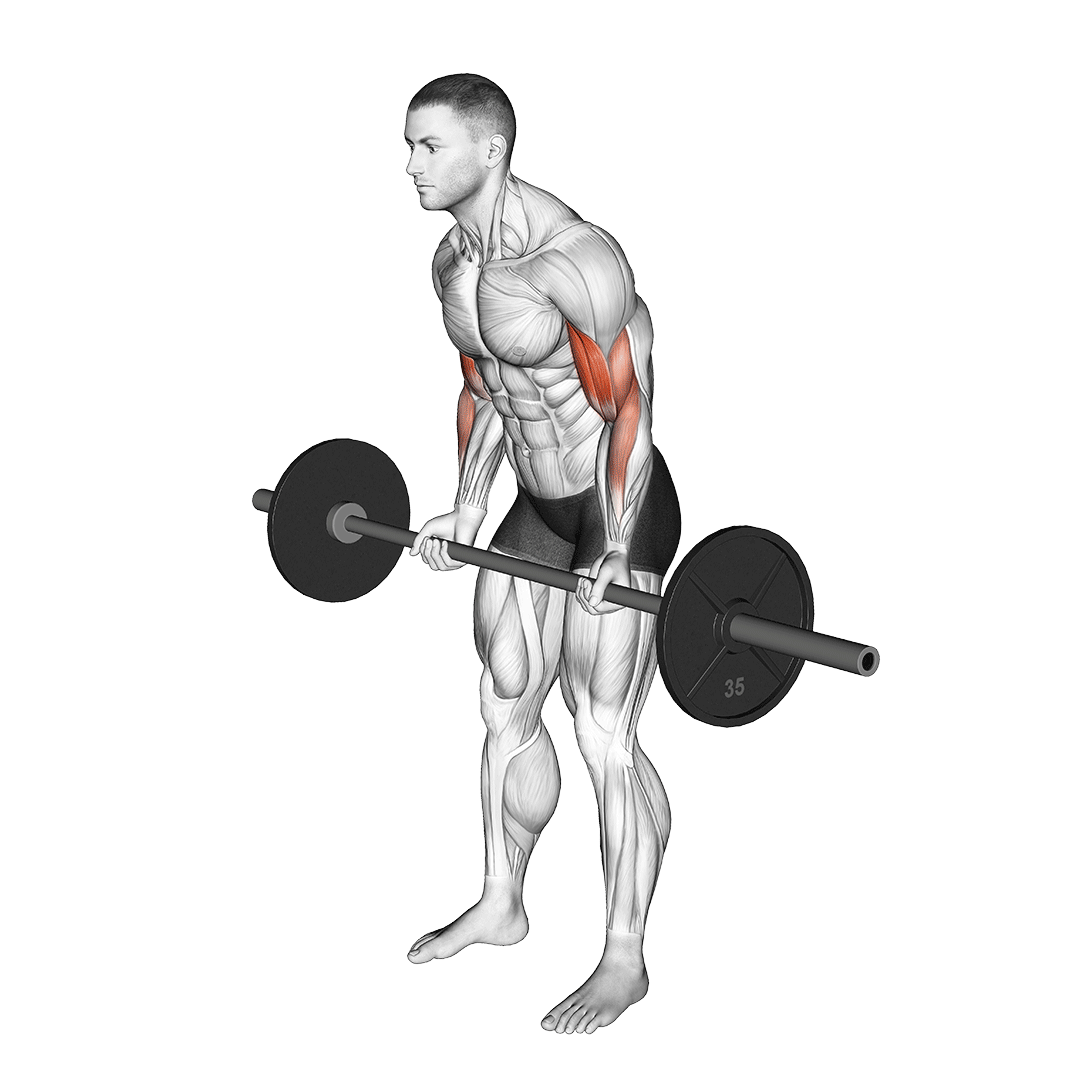
In Conclusion
Regardless of which barbell curl alternative you pick, remember to research how to perform it properly, as well as to ensure that it is included into your workout program in as optimal a manner as possible.
For lifters seeking out a barbell curl alternative due to wrist or forearm tendinopathy - remember to follow the advice of your physician prior to returning to any sort of resistance training, as continuing to train through the pain may worsen your condition, even if the exercise is “safer” so to speak.
References
1. Schwarznegger, Arnold. Dobbins, Bill. (Nov 5, 1999) “The New Encyclopedia of Modern Bodybuilding : The Bible of Bodybuilding, Fully Updated and Revised EBook Edition” Simon and Schuster Publishing ISBN-10: 3200328452
2. Marcolin G, Panizzolo FA, Petrone N, Moro T, Grigoletto D, Piccolo D, Paoli A. Differences in electromyographic activity of biceps brachii and brachioradialis while performing three variants of curl. PeerJ. 2018 Jul 13;6:e5165. doi: 10.7717/peerj.5165. PMID: 30013836; PMCID: PMC6047503.
